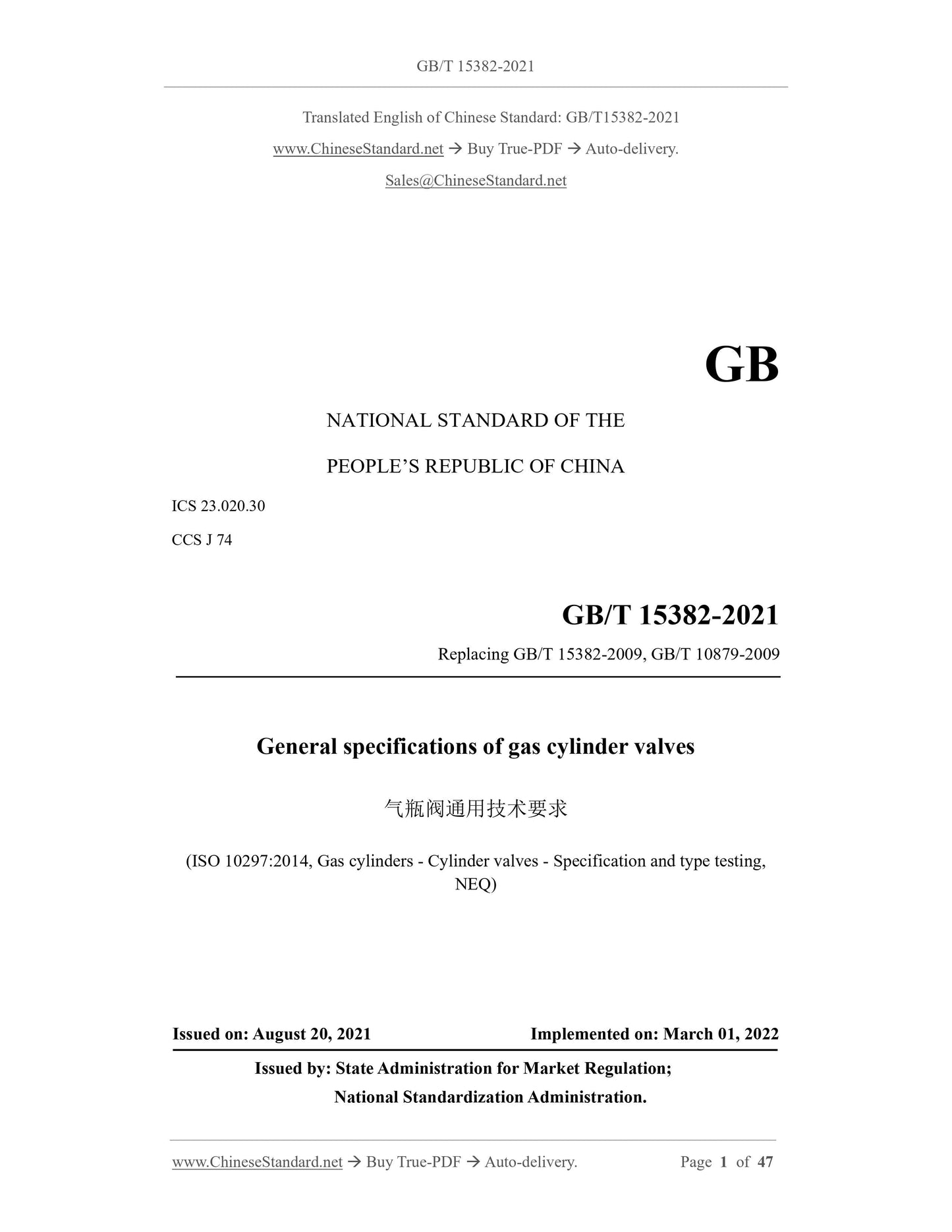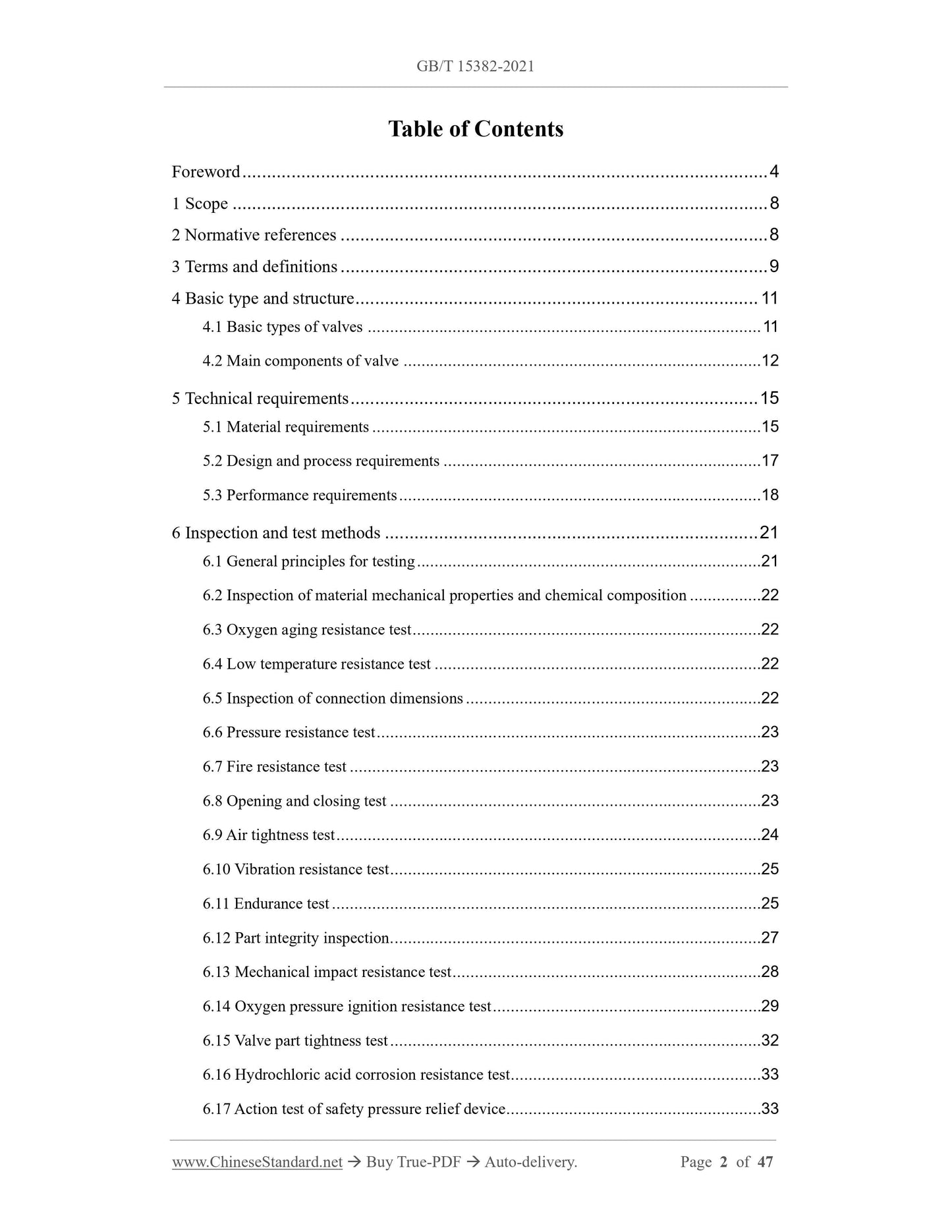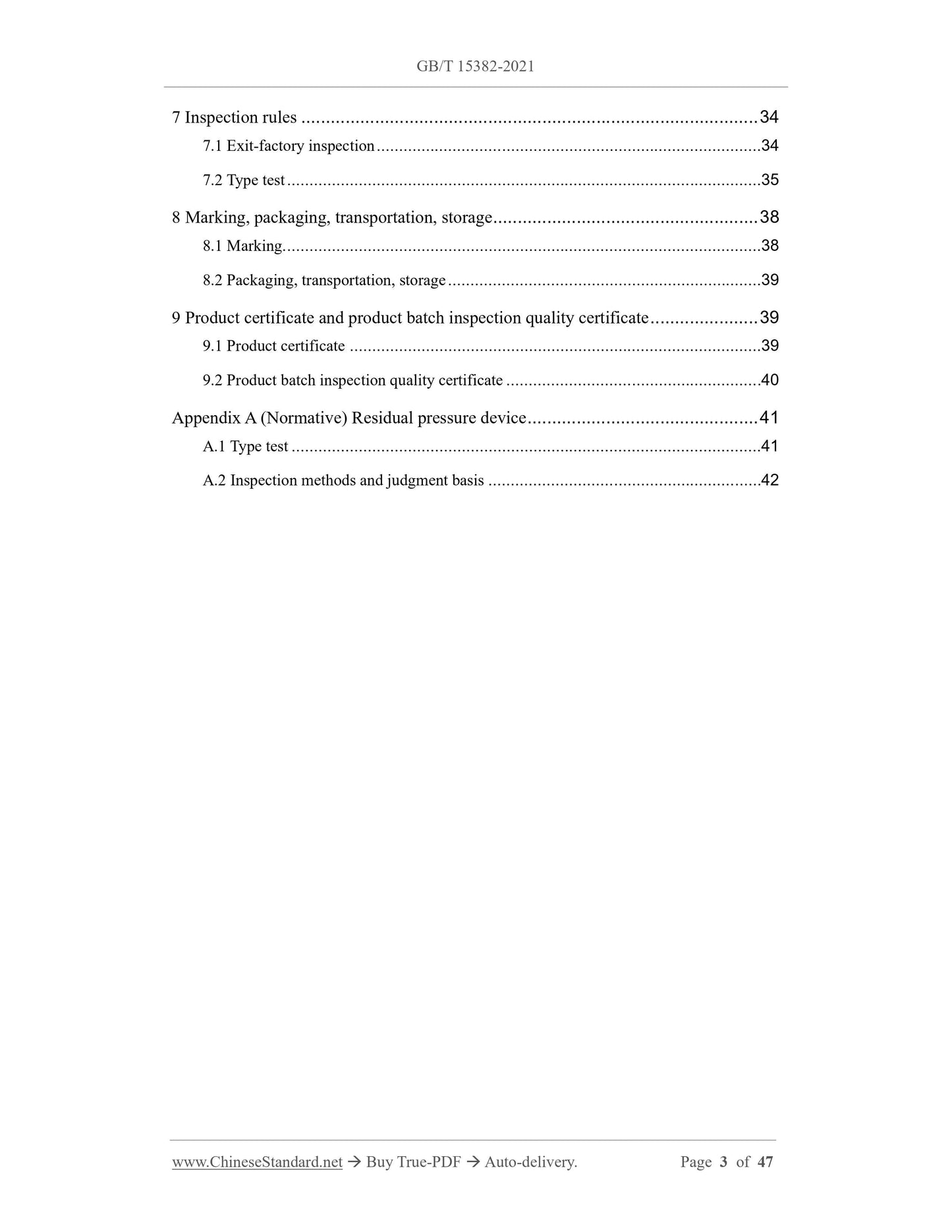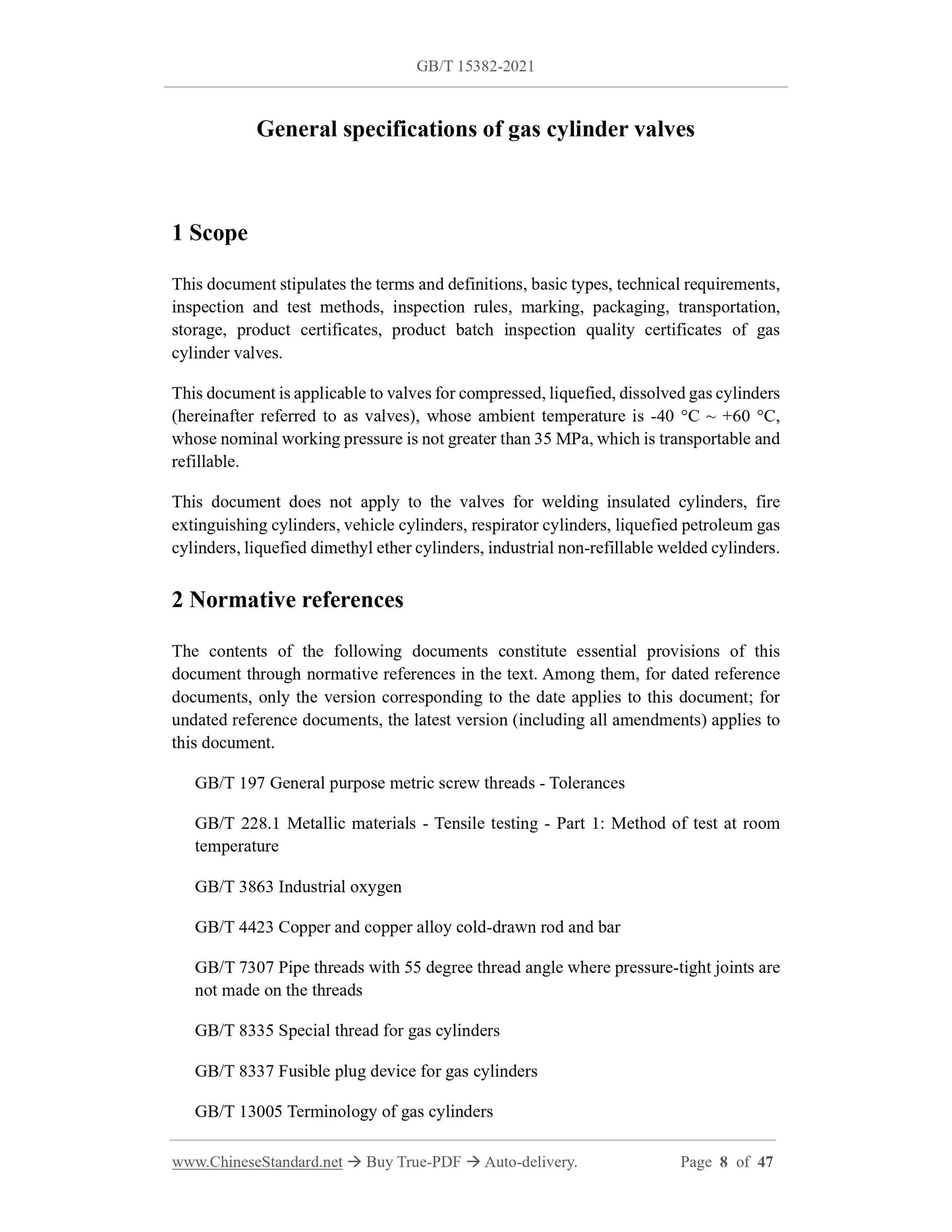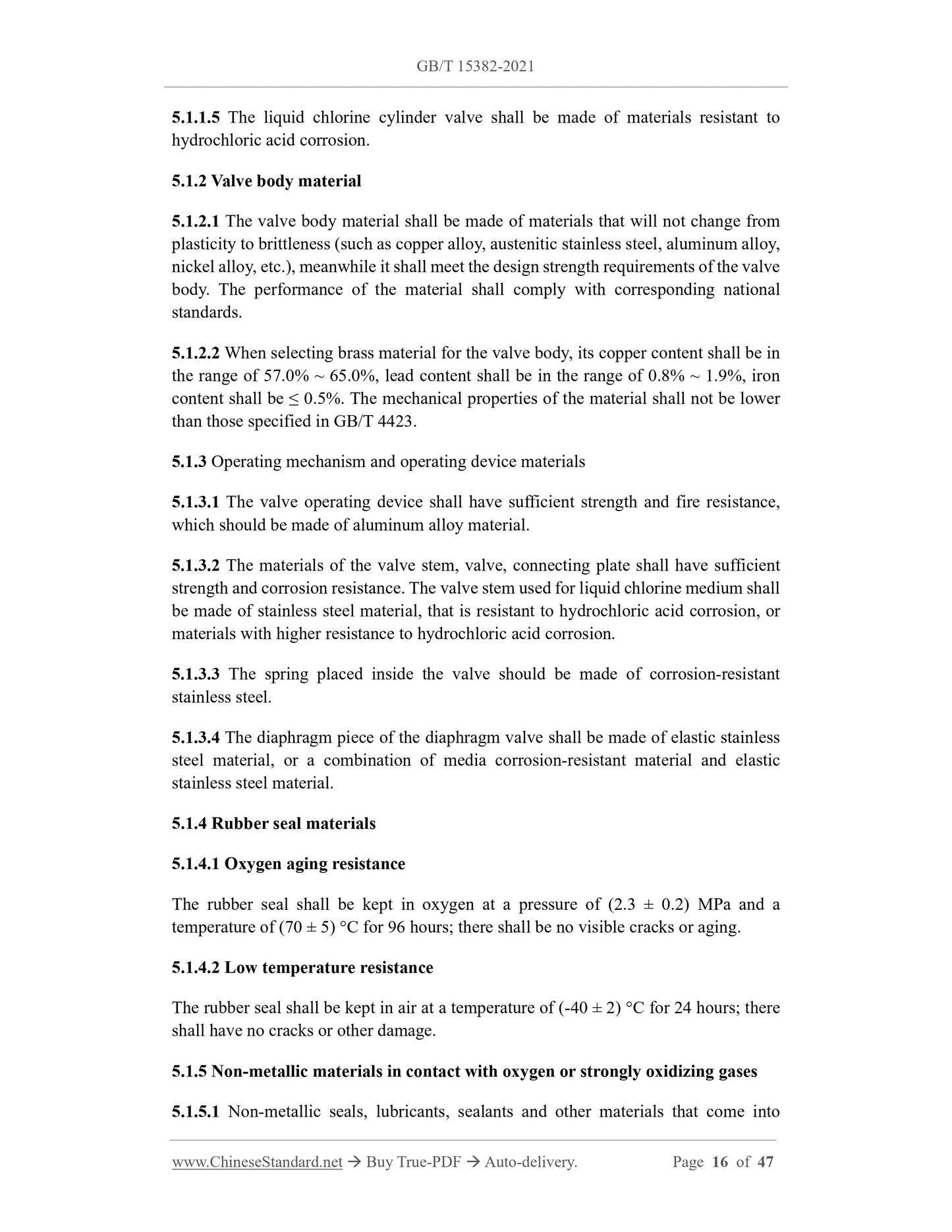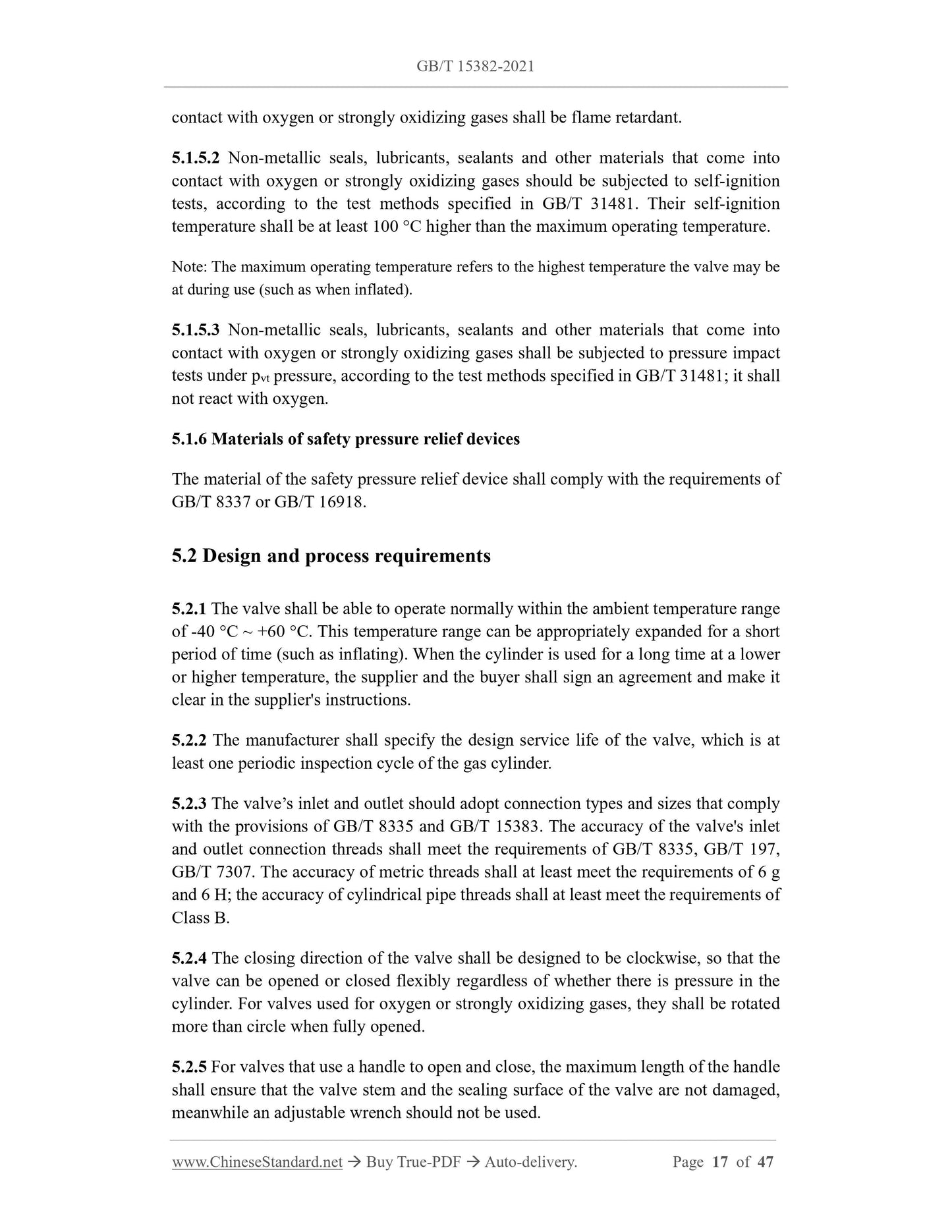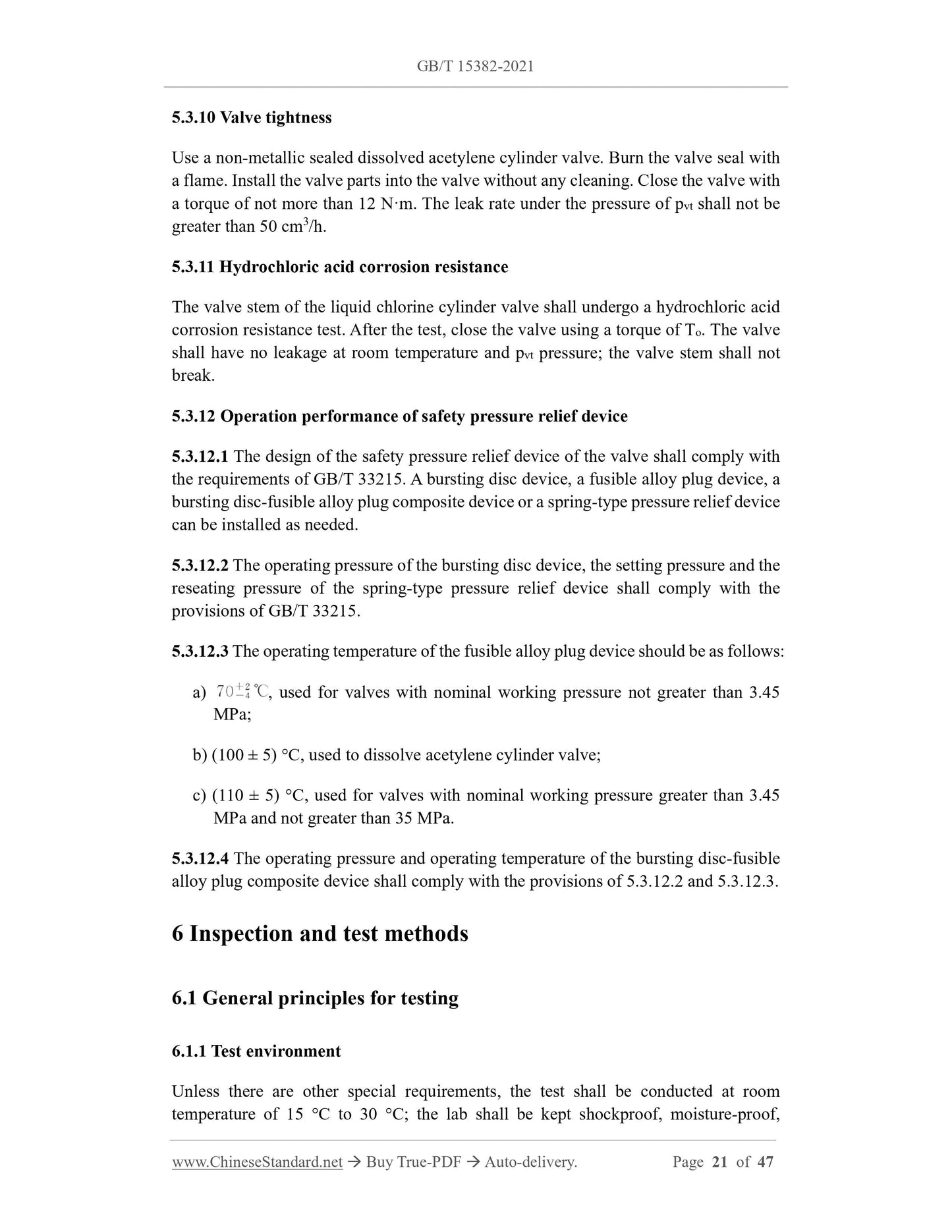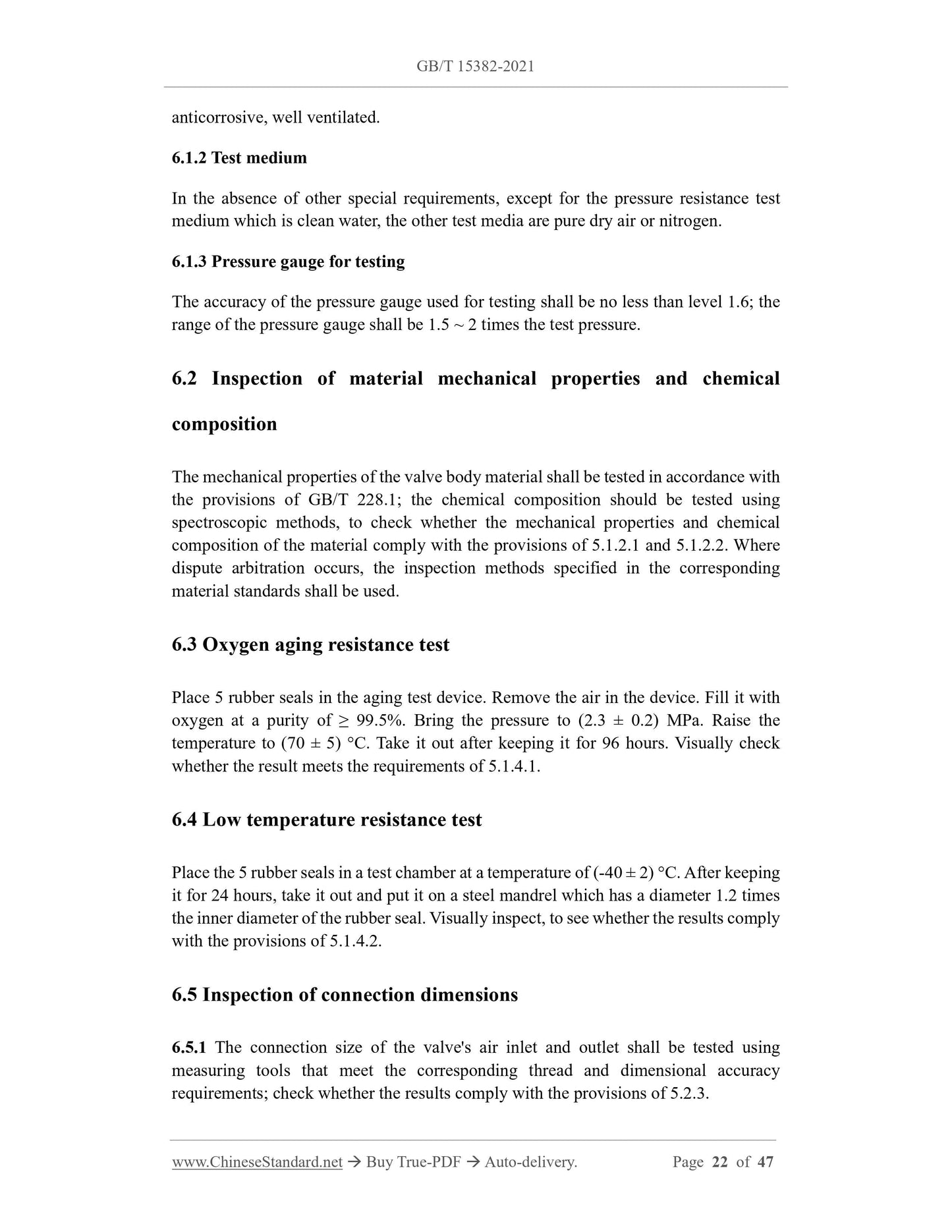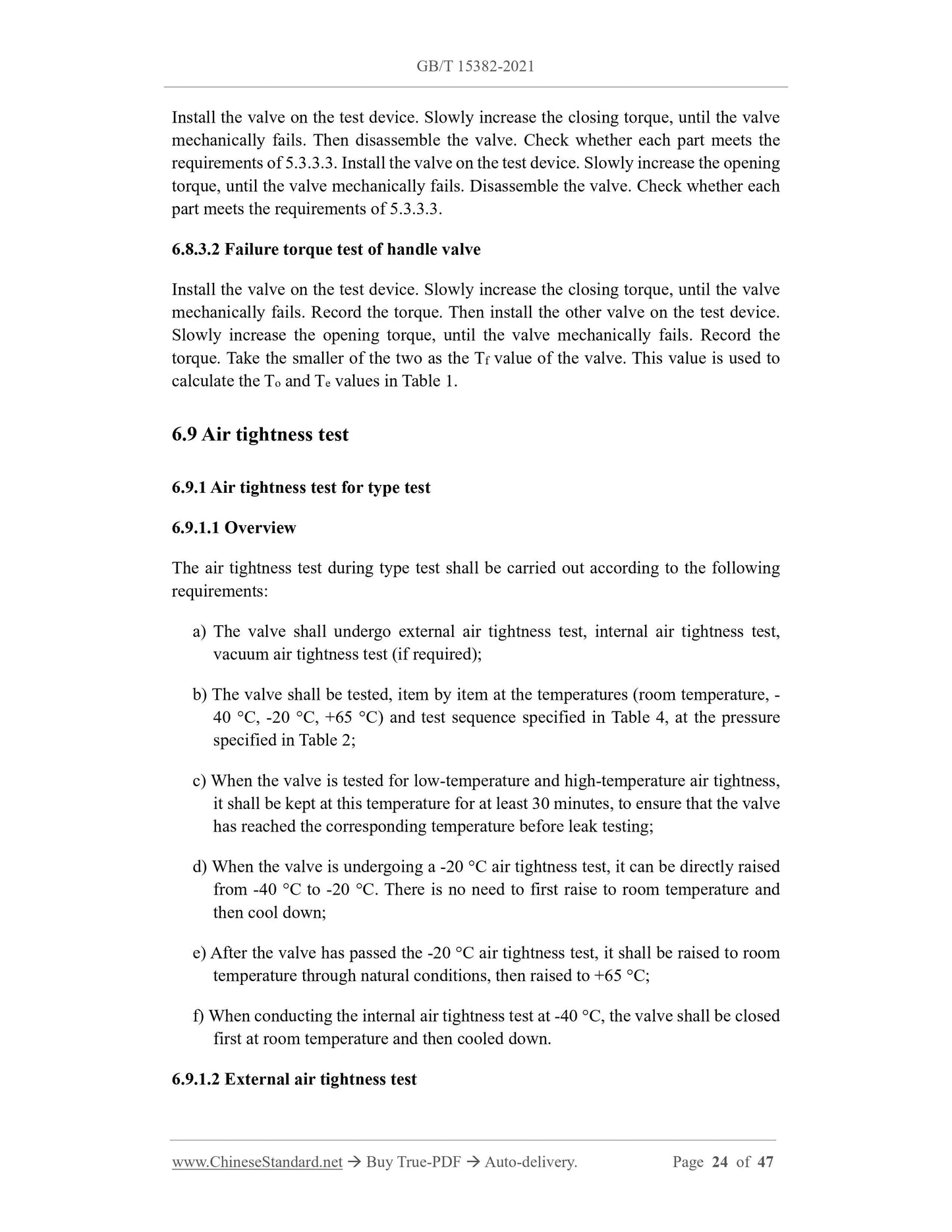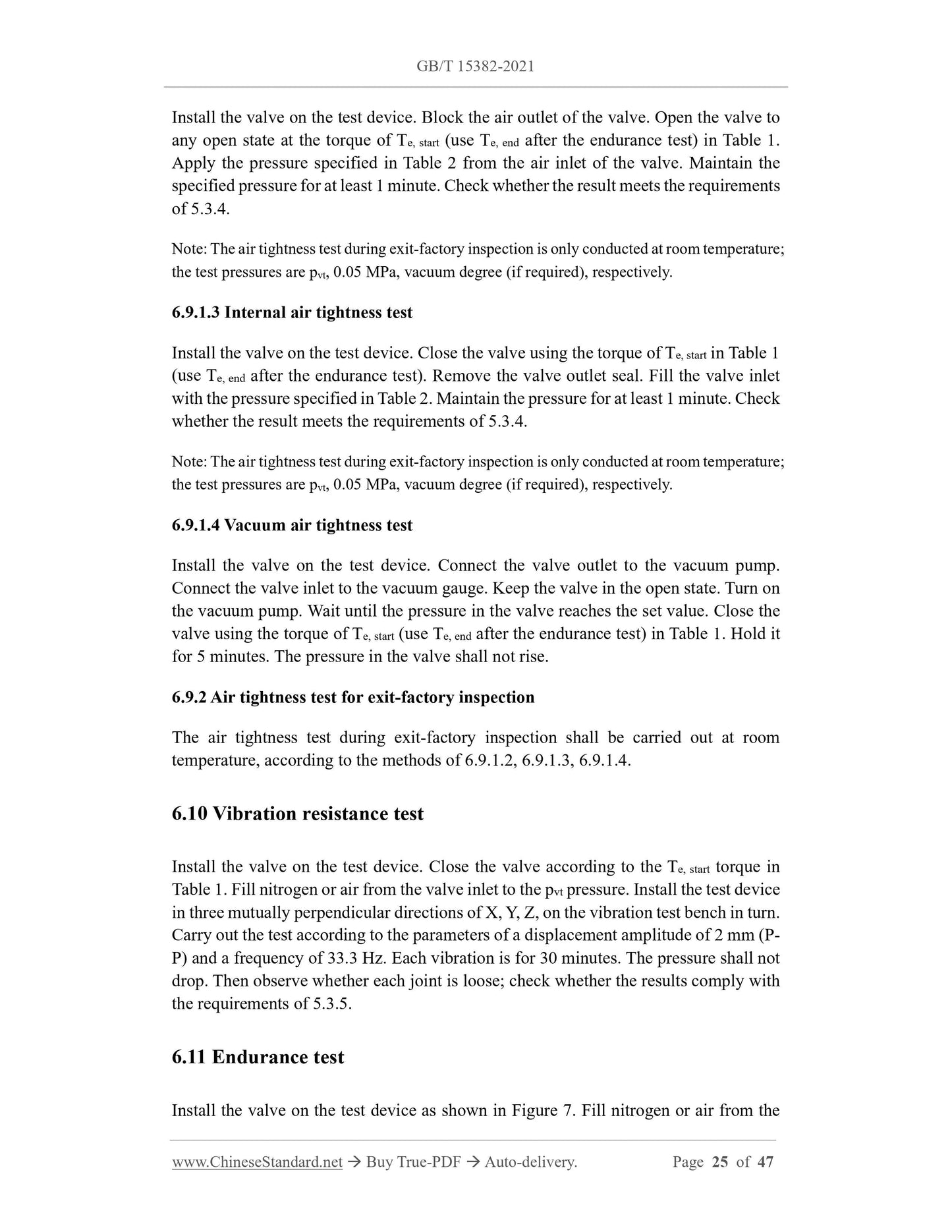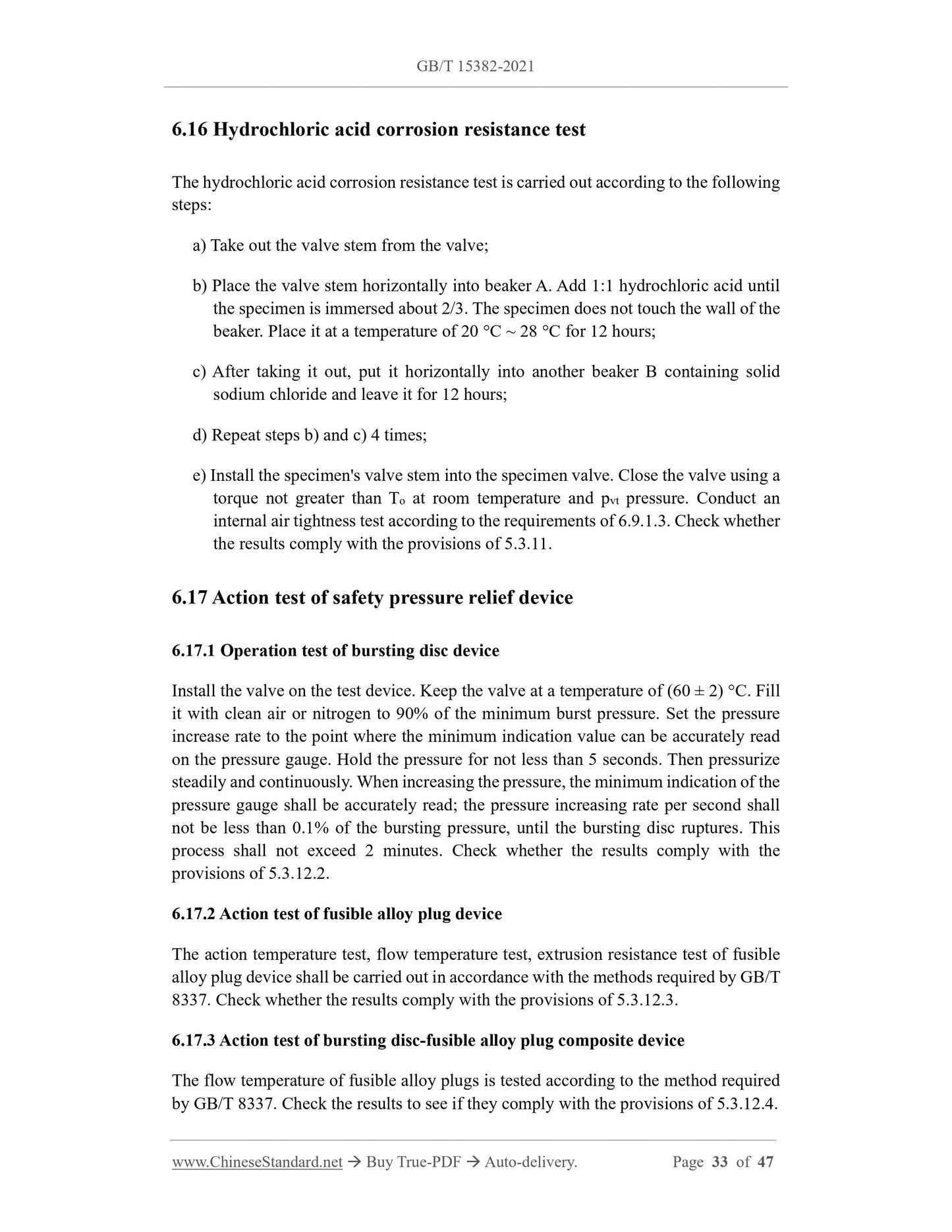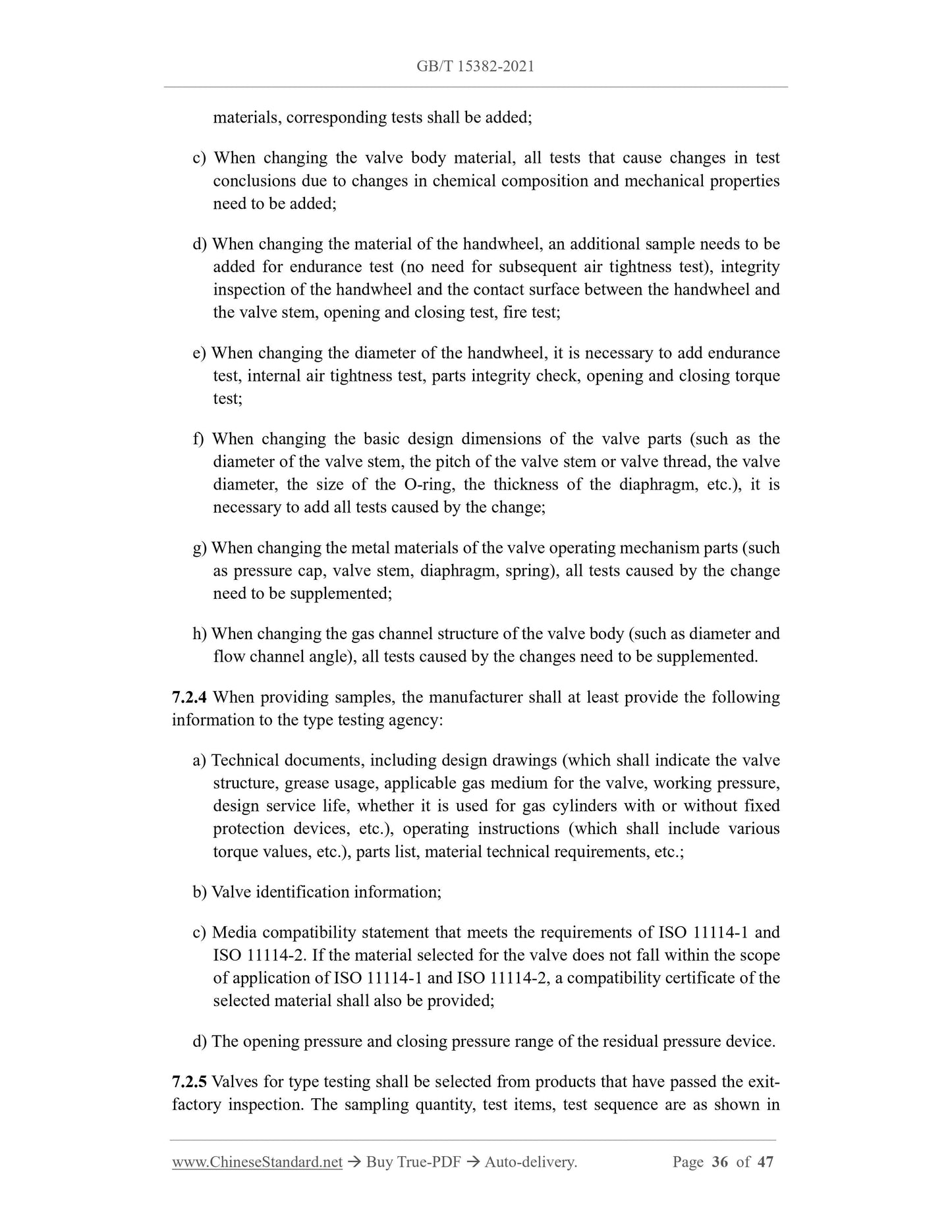1
/
of
12
www.ChineseStandard.us -- Field Test Asia Pte. Ltd.
GB/T 15382-2021 English PDF (GB/T15382-2021)
GB/T 15382-2021 English PDF (GB/T15382-2021)
Regular price
$455.00
Regular price
Sale price
$455.00
Unit price
/
per
Shipping calculated at checkout.
Couldn't load pickup availability
GB/T 15382-2021: General specifications of gas cylinder valves
Delivery: 9 seconds. Download (and Email) true-PDF + Invoice.Get Quotation: Click GB/T 15382-2021 (Self-service in 1-minute)
Newer / historical versions: GB/T 15382-2021
Preview True-PDF
Scope
This document stipulates the terms and definitions, basic types, technical requirements,inspection and test methods, inspection rules, marking, packaging, transportation,
storage, product certificates, product batch inspection quality certificates of gas
cylinder valves.
This document is applicable to valves for compressed, liquefied, dissolved gas cylinders
(hereinafter referred to as valves), whose ambient temperature is -40 °C ~ +60 °C,
whose nominal working pressure is not greater than 35 MPa, which is transportable and
refillable.
This document does not apply to the valves for welding insulated cylinders, fire
extinguishing cylinders, vehicle cylinders, respirator cylinders, liquefied petroleum gas
cylinders, liquefied dimethyl ether cylinders, industrial non-refillable welded cylinders.
Basic Data
| Standard ID | GB/T 15382-2021 (GB/T15382-2021) |
| Description (Translated English) | General specifications of gas cylinder valves |
| Sector / Industry | National Standard (Recommended) |
| Classification of Chinese Standard | J74 |
| Word Count Estimation | 30,393 |
| Issuing agency(ies) | State Administration for Market Regulation, China National Standardization Administration |
Share
